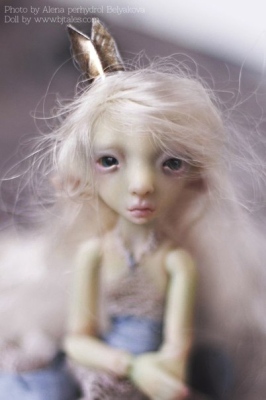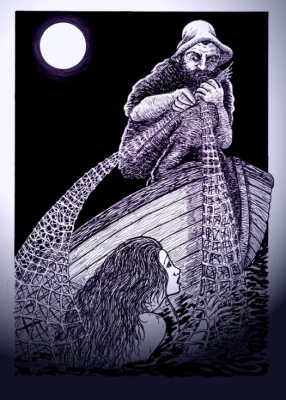The Asrai
Michael Berman, UK
Michael Berman’s published work includes The Power of Metaphor for Crown House, The Nature of Shamanism and the Shamanic Story for Cambridge Scholars Publishing, Shamanic Journeys through the Caucasus and Shamanic Journeys, Shamanic Stories for O-Books, Journeys outside Time for Pendraig Publishing, and Tales of Power for Lear Books. A Bridge to the Other Side: Death in the Folk Tradition and Georgia through Earth, Fire, Air and Water were both published by Moon Books in 2012. ELT publications include A Multiple Intelligences Road to an ELT Classroom, In a Faraway Land (a resource book for teachers on storytelling), On Business and for Pleasure (a self-study workbook), and English Language Teaching Matters, written with Mojca Belak and Wayne Rimmer. For more information please visit www.Thestoryteller.org.uk,
E-mail: berman.michael@rocketmail.com
Level: Upper Intermediate
Target Audience: Adults
Language / Skills Focus: Listening & Speaking, and collaborative story writing
Materials: A picture of a mermaid and photocopies of the worksheet. Photocopies of the story (optional) to hand out at the end of the session.
Pre-listening: Show the class a picture of a mermaid. “What’s this? And what do you know about mermaids?” (A brain-storming session). “Well, today’s story is not about a mermaid, but an Asrai.”

An Asrai is a type of aquatic fairy, similar in some ways to mermaids, which often has webbed hands and feet. Some sources describe them as timid and shy, standing only between 2 and 4 feet tall [a bit less or a bit more than a metre], while others depict them as tall and lithe. They are said to look like beautiful young maidens, sometimes as young as children, while actually being hundreds of years old. If an Asrai is seen by a man, her beauty is so great that, according to folklore, the man will instantly wish to capture her. The Asrai are as deathly afraid of capture as they are of the sun, for if captured or if even a single ray of sunlight touches them, it is said that they die and turn into a pool of water. In some Lore their touch leaves your skin (where they made contact) forever cool; never able to be as heated as the rest of your body.

“If you were a poor fisherman and you came upon one by chance, what do you think you would do, and why?”
While-listening: “Now listen to the story, an adaptation of a traditional English folktale to find out what the fisherman does, and what happens to him as a result.”
Post-listening: Without looking at the text, place all the parts of the story in the correct order:
1 f / 2 b / 3 c / 4 a / 5 d / 6 i / 7 j / 8 h / 9 g / 10 e
A group work activity: Perhaps what the fisherman had was just a dream. After all, it is common to dream of having something, and then to wake up and find it is no longer there. Imagine things could be different though, and write a story that contains the following line: And when I woke up, there he / she / it was, right next to me, and I couldn’t believe my eyes!
***
Instead of the more usual state of affairs, where men are victims of female water spirits who use their beauty to lure them to their deaths, in this case it is the Asrai’s beauty that results in her own demise, as the fisherman cannot bear to let her go. As for the ‘paralysed limb’ motif, it comes up occasionally in stories where a person touches a supernatural creature or is touched by one, though the effects are usually more severe than those described here.
The Asrai
One moonlit night, a man was out fishing on one of Cheshire’s deep lakes when he felt something unusually heavy in his net. Hauling it on board, he was amazed to find in its meshes a beautiful, naked girl with long, green hair, webbed fingers and toes, and no larger than a twelve-year-old child.
He had heard old people say these fairies only came up from their cool, deep homes below the water once in a hundred years, to look at the moon and to grow. He had always discounted such stories as myth, but now the evidence lay before him, tangled in his net, struggling to get free. Indeed it, or she, appeared to be trying to tell him something, and was pointing in some agitation to the moon, which was by now setting.
But her speech, which was soft, like ripples in the water, was incomprehensible to him, and though her evident distress caused him some discomfort, he could easily imagine the value of such a find. If nothing else, his children would be delighted to see it, but more, he might be rewarded with hard cash; the owner of the local hall would pay him handsomely to be able to exhibit such a creature for everyone to come and gawp at.
The Asrai seemed to guess his intention, and put her hand on his arm, appealing to him, but her touch was so cold it hurt, leaving a red mark. ‘Like cool foam, the touch was,’ he said later. The contact appeared to harm her also, for she drew back and curled up in the bottom of the boat, as far away from him as possible. She was clearly very distressed and sobbing uncontrollably by this time.
Remembering how the Asrai were said to be afraid of daylight, he covered her with rushes, and rowed for the lake shore, turning a deaf ear to the creature’s cries – now more subdued than they had been earlier, and growing fainter all the time – until, by sunrise, they were barely audible when he eventually arrived back at the jetty, near where he lived.
Once back on dry land, he pulled back the rushes to inspect his catch, but all he found was a pool of water; the Asrai had vanished, and he was left with nothing but the mark on his arm to show for his night’s work.
The Asrai: Worksheet
Without looking at the text, place all the parts of the story in the correct order:
- But her speech, which was soft, like ripples in the water, was incomprehensible to him, and though her evident distress caused him some discomfort, he could easily imagine the value of such a find.
- Hauling it on board, he was amazed to find in its meshes a beautiful, naked girl with long, green hair, webbed fingers and toes, and no larger than a twelve-year-old child.
- He had heard old people say these fairies only came up from their cool, deep homes below the water once in a hundred years, to look at the moon and to grow. He had always discounted such stories as myth, but now the evidence lay before him, tangled in his net, struggling to get free. Indeed it, or she, appeared to be trying to tell him something, and was pointing in some agitation to the moon, which was by now setting.
- If nothing else, his children would be delighted to see it, but more, he might be rewarded with hard cash; the owner of the local hall would pay him handsomely to be able to exhibit such a creature for everyone to come and gawp at.
- Once back on dry land, he pulled back the rushes to inspect his catch, but all he found was a pool of water; the Asrai had vanished, and he was left with nothing but the mark on his arm to show for his night’s work.
- One moonlit night, a man was out fishing on one of Cheshire’s deep lakes when he felt something unusually heavy in his net.
- Remembering how the Asrai were said to be afraid of daylight, he covered her with rushes, and rowed for the lake shore, turning a deaf ear to the creature’s cries – now more subdued than they had been earlier, and growing fainter all the time – until, by sunrise, they were barely audible when he eventually arrived back at the jetty, near where he lived.
- She was clearly very distressed and sobbing uncontrollably by this time.
- The Asrai seemed to guess his intention, and put her hand on his arm, appealing to him, but her touch was so cold it hurt, leaving a red mark. ‘Like cool foam, the touch was,’ he said later.
- The contact appeared to harm her also, for she drew back and curled up in the bottom of the boat, as far away from him as possible.
1 ___ 2 ___ 3 ___ 4 ___ 5 ___ 6 ___ 7 ___ 8 ___ 9 ___ 10 ___
Perhaps what the fisherman had was just a dream. After all, it is common to dream of having something, and then to wake up and find it is no longer there. Imagine things could be different though, and write a story that contains the following line: And when I woke up, there he / she / it was, right next to me, and I couldn’t believe my eyes!


Please check the Creative Methodology for the Classroom course at Pilgrims website.


|